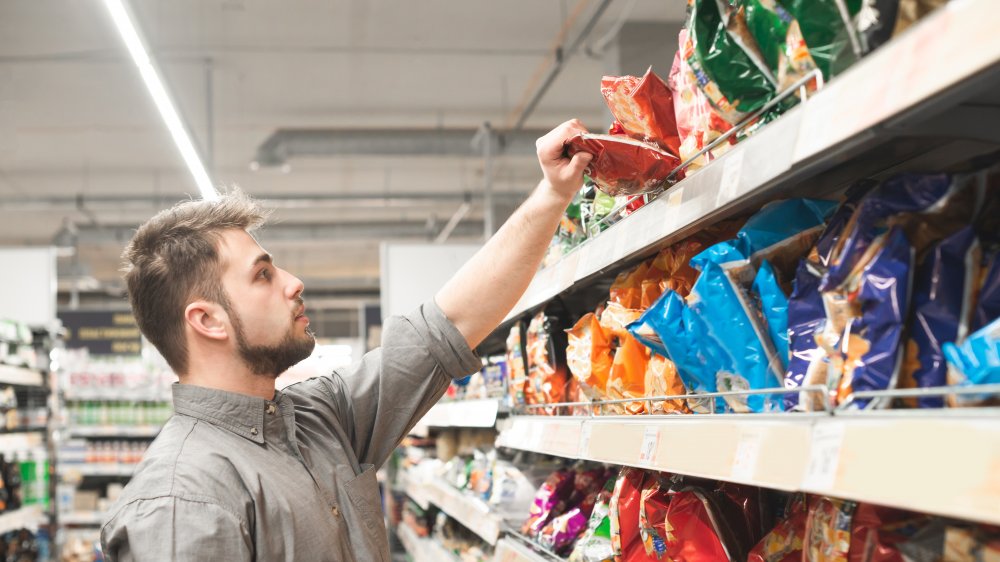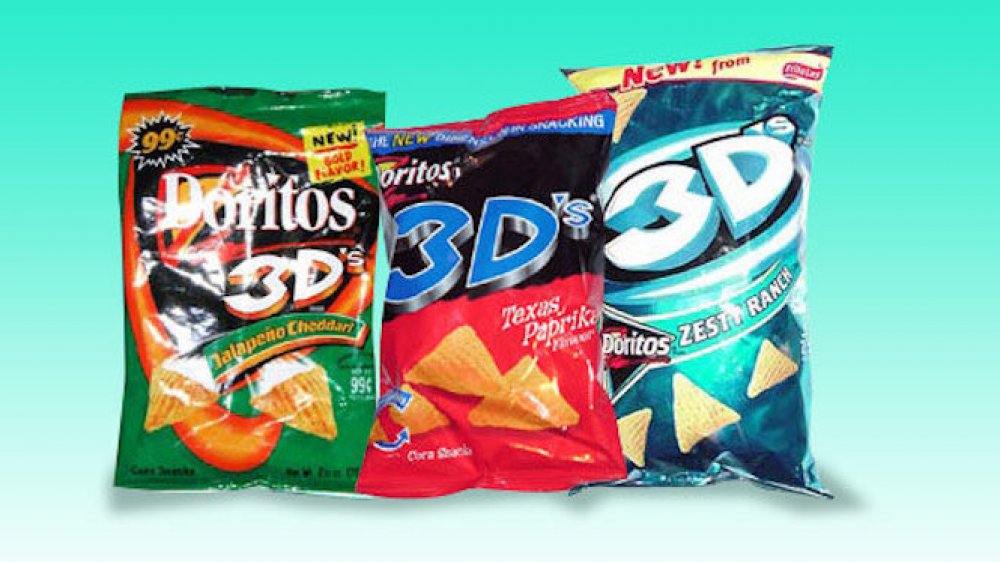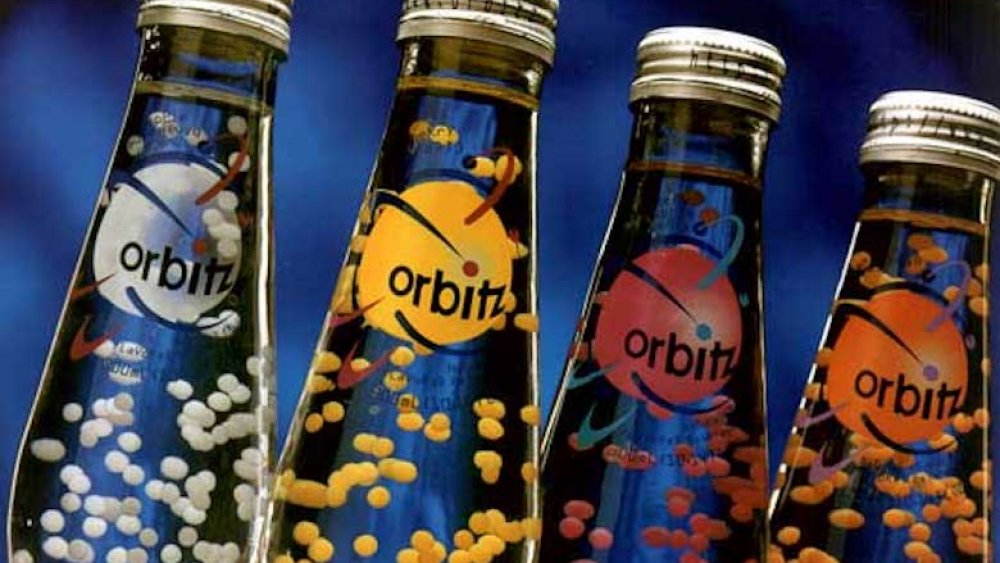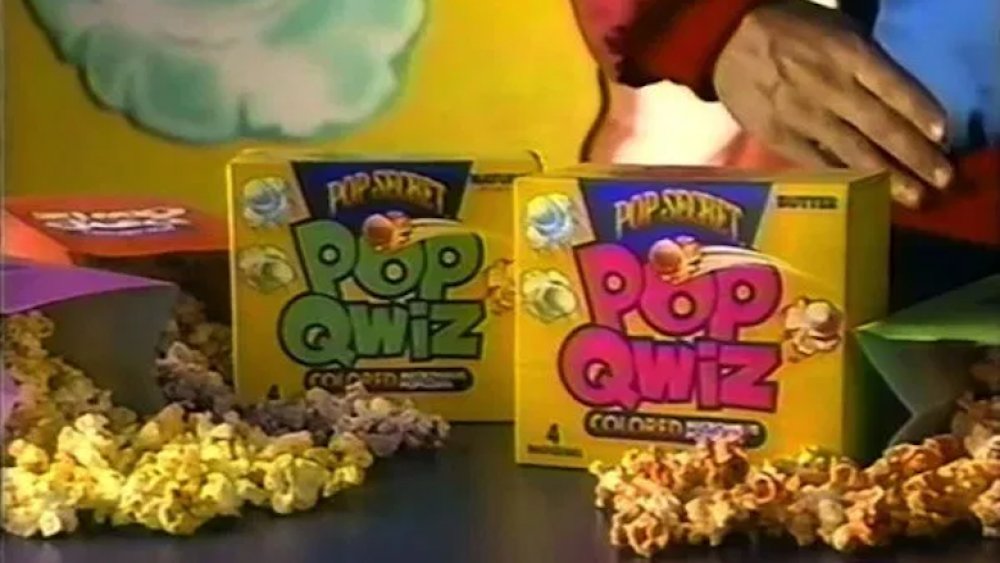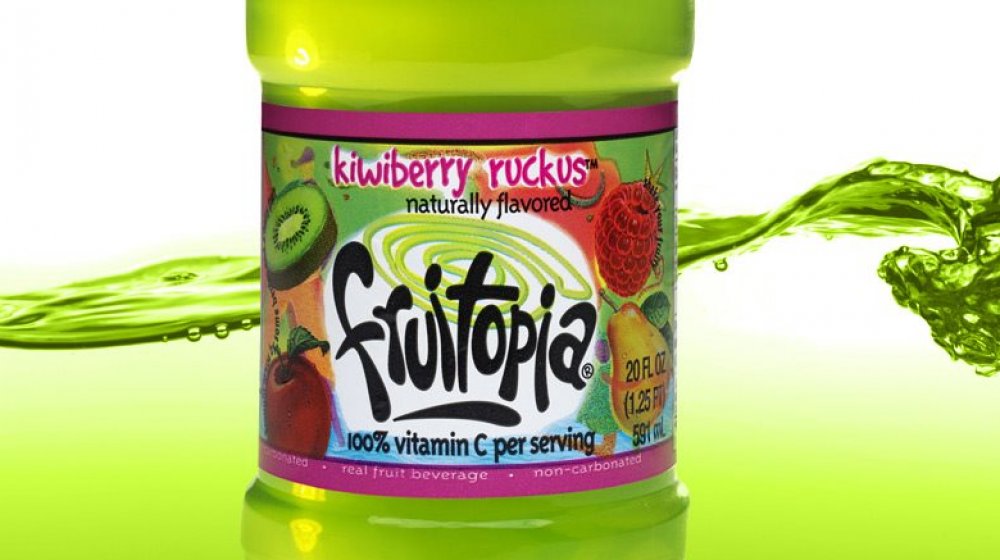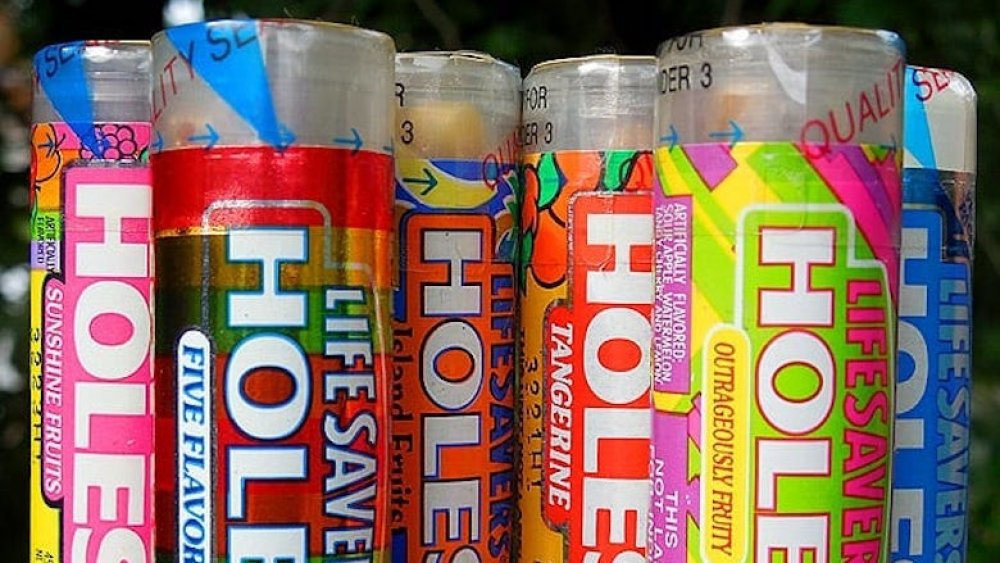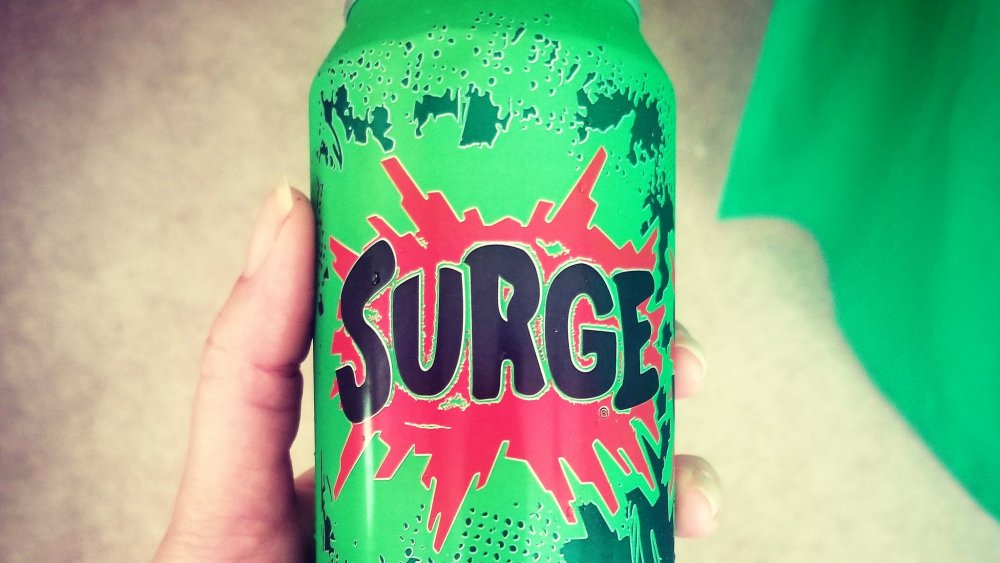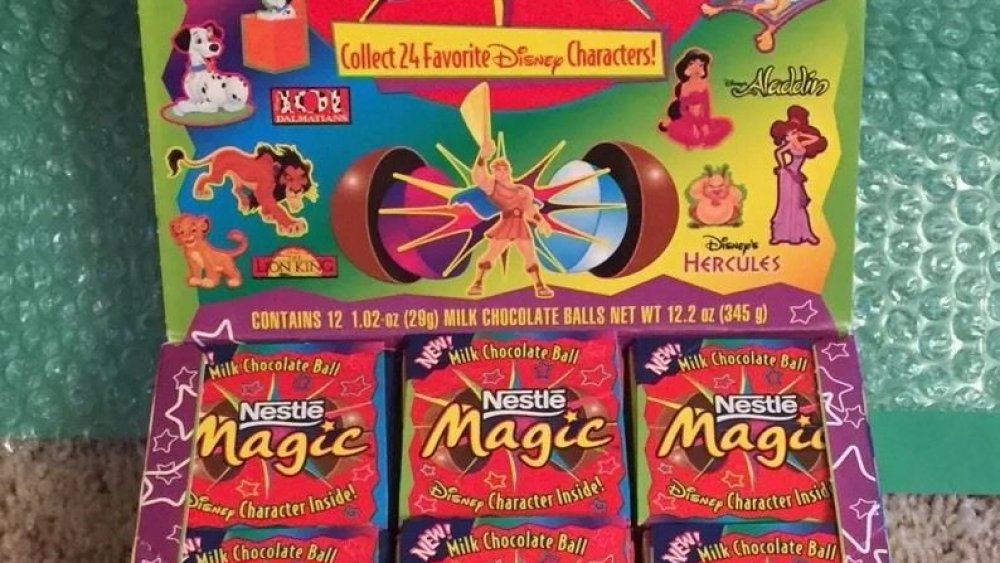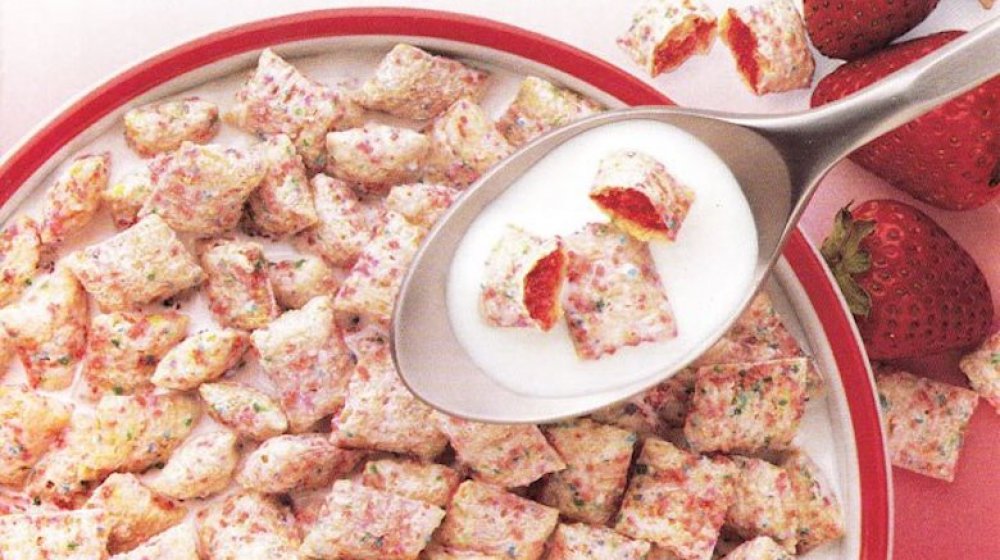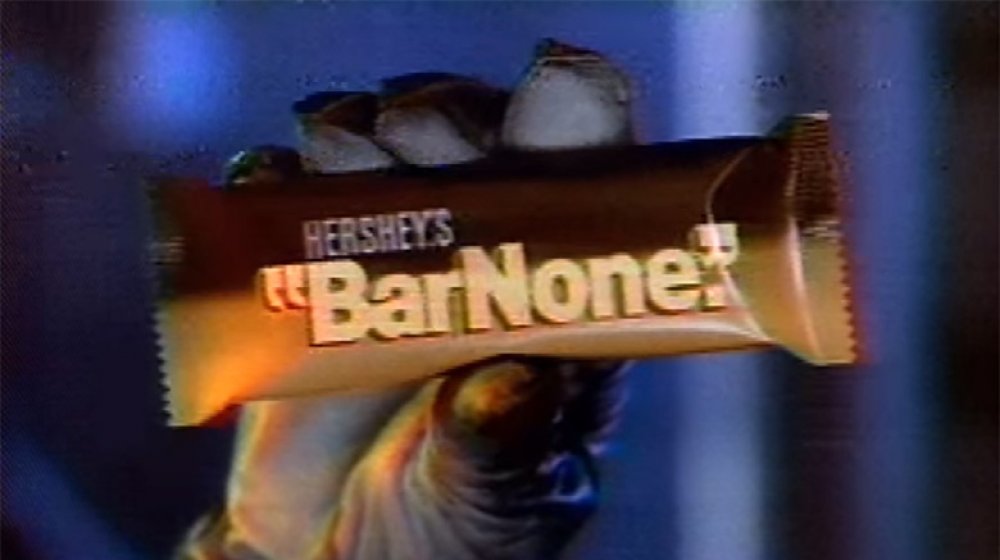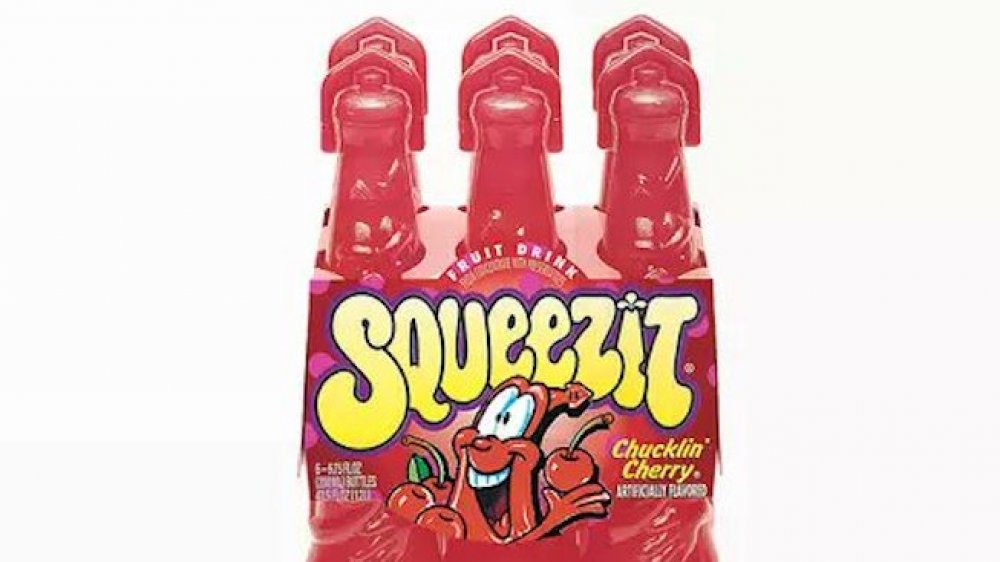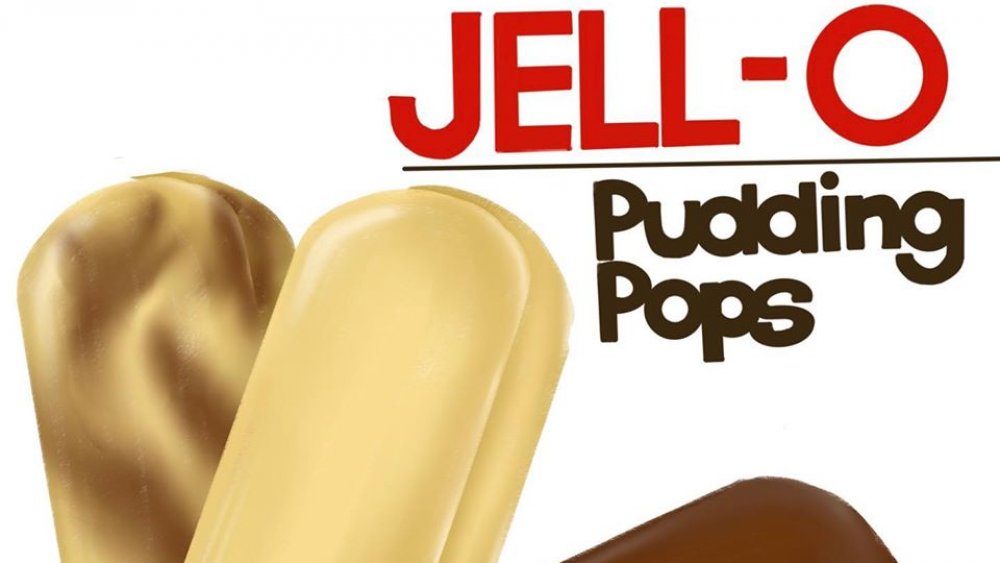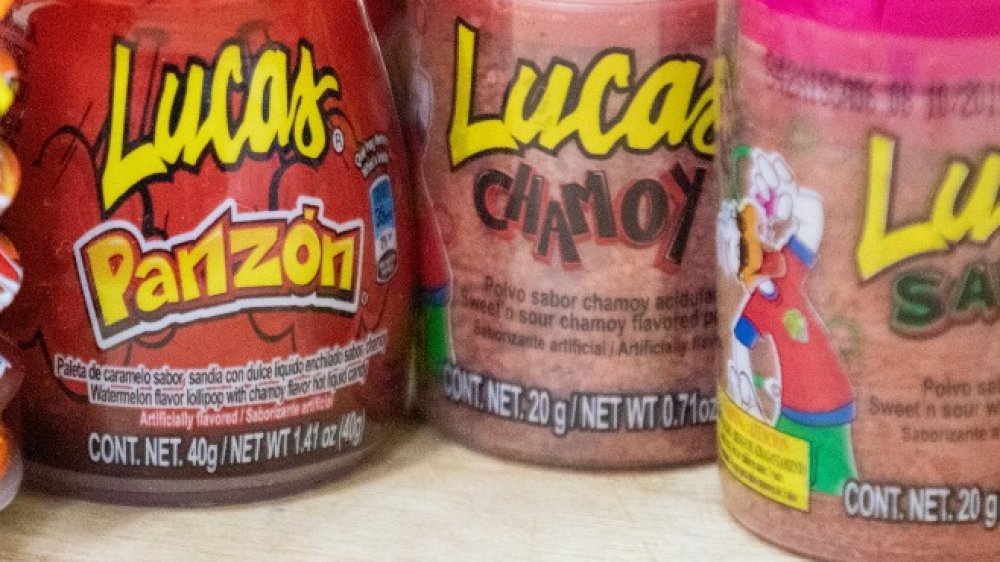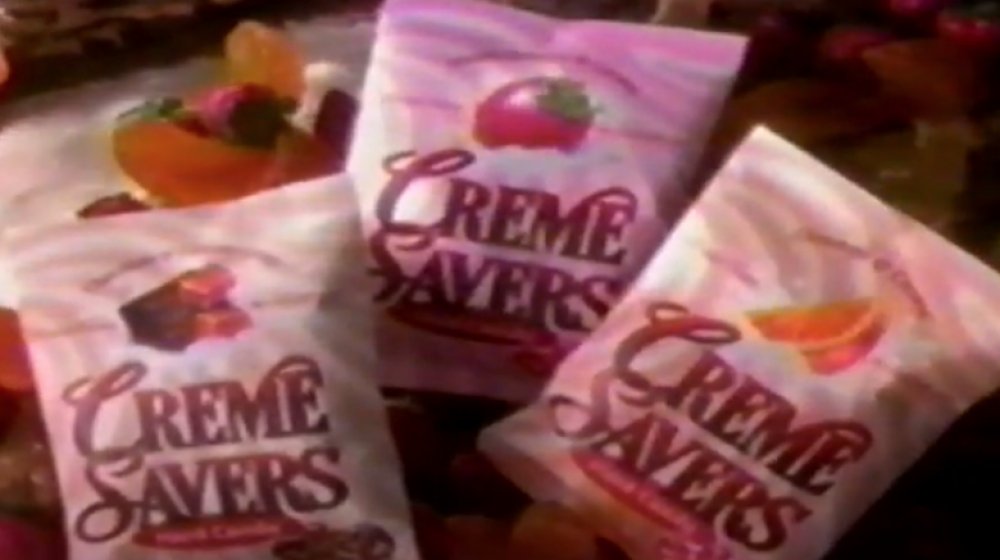The Real Reason These '90s Snacks Stopped Being Made
We may receive a commission on purchases made from links.
Attention, 30-somethings and parents of 30-somethings: We're about to take you on a journey. If looking forward makes you a bit anxious, then that's all the more reason to take a look back for some nostalgic comfort (though the verdict is out on whether or not it's healthy). Anyway, we're talking about snacks, both in food and drink, from the 1990s.
This was a time when the commercials were zany, the packaging was loud, and the nutritional facts were ignored. And while many of these snack-food products are still available — spotted easily in our grocery aisles — many others were retired thanks to bursting marketing bubbles, low sales, and in some cases, actual danger. Who knew Clinton-era snacking was so dramatic?
Let's recap some popular, must-include items dear to the end of the 20th century, like Surge and 3D Doritos, as well as some obscure snack aisle references, like Orbitz Water and Pop Qwiz Popcorn. We'll cover everything from the Magic Fruit Bus to a cereal commercial starring '90s icon Marla Sokoloff, and why many of these '90s offerings are now gone forever.
3D Doritos
The one con to 3D Doritos is this: They don't travel well. A resealable bag, or its original packaging, could never protect those three-dimensional little beauties. And there's one more con to these puffed up, zesty Barbie pillows — they no longer exist.
Frito-Lay released 3D Doritos in 1998, formally through a zany Super Bowl commercial starring Ali Landry and a pre-Will & Grace famous Sean Hayes. Doritos gave their 3D offspring more flavor options than Nacho Cheese, including Jalapeño Cheddar and Zesty Ranch. There were also mini versions of 3D Doritos, available in little plastic canisters with a lid that turned into a bowl.
However, by the early 2000s, 3D Doritos were unfairly yanked from the shelves. And why? There's really no concrete explanation, but apparently, they just weren't selling as well as Frito-La was probably hoping. Another 3D version of Doritos tried to hit the scene in 2015, which was referred to as "Jacked," but it absolutely wasn't the same. And before you even ask, yes, there is a petition to "Bring Back 3D Nacho Cheese Doritos" on Change.org.
Orbitz Water
Before La Croix, Waterloo, Bubly, and other fun water options, there was one in the 1990s worth highlighting — Orbitz Water. It was a futuristic spinoff of Clearly Canadian sparkling water (shoutout to that amazing Mountain Blackberry flavor), and made by The Clearly Food & Beverage Company of Canada. But Orbitz was not carbonated. Instead, it had little colorful balls of gellan gum. It seriously looked like a lava lamp, and it was maybe the most hopelessly '90s beverage that can be remembered.
As troubling as its outside appearance might have been, the marketing also had a lot to be desired. Slogans like, "Texturally enhanced alternative beverage," and, "Prepare to embark on a tour into the bowels of the Orbiterium," and, "The drink with balls" were thrown around without fear of consequence.
In addition to the odd catchphrases, the flavors were equally weird. Some try-too-hard options included pineapple banana cherry coconut (yeah, that was all one flavor) and blueberry melon strawberry. However, in case you were wondering, the gelatin balls never rushed out into your mouth. They magically stayed in place. The drink debuted 1997 but tanked within a year due to low sales. By 1998, the domain belonged to a new travel website, Orbitz.
Pop Qwiz Popcorn
Popcorn didn't really need to be sold to kids or snack fans, but that doesn't sound like the spirit of the '90s. If anything was going to be bowled before turning on that weekend's lineup of SNICK, it might as well be colorful popcorn.
Cue Pop Qwiz Popcorn. In 1991, General Mills' Pop Secret microwaveable popcorn released a variety of colored kernels aimed at kids. Popcorn arrived in your lap in colors like red, green, blue, yellow, orange, and purple. And, of course, there was a mystery bag. The colors didn't equate to any flavoring, it was just coloring. And the bag did not match the popcorn color inside — which was half the fun.
On the packaging, there were those "qwizzes," called Match-Qwiz, Shape-Qwiz, Scramble-Qwiz and Riddle-Qwiz — pretty much just puzzles and brain teasers.
Overall, the commercial is most likely the thing former kids and their poor parents remember more than the snack. There was an over-the-top game show host, complete with bright spiky hair and a colorful, multi-paneled jacket, and a kid contestant. The host was throwing open microwave doors, trying find the right popcorn color in question. Though the colored Pop Qwiz Popcorn is no longer around, Pop Secret Magic Colors popped up around 2011 — though even that is hard to find.
Fruitopia
Famed marketer Sergio Zyman, after failing to make New Coke happen, introduced OK Soda and Fruitopia in the 1990s. While OK Soda was for sarcastic Gen-Xers, Fruitopia — launched in 1994 — was meant for the groovier hippie types. The brand even landed Kate Bush to do the music for some of the commercials. After the launch, A New York Times article was quick to call the drink a Snapple ripoff. In their defense, Fruitopia did first come out in pebbled, squat glass bottles. There was also a whole debacle with Miami University in Ohio over who, them or Coca-Cola, actually named the drink.
But despite all the drama, many '90s kids had a colorful plastic bottle of the non-carbonated fruity beverage in his or her lunchbox or counted change to snag one out of a high school campus vending machine. Fruitopia came in vivid colors and in (now eye-roll inducing) flavors like Pink Lemonade Euphoria, Strawberry Passion Awareness, and Raspberry Kiwi Karma. And don't forget The Magic Fruit Bus — the roaming advertisement from which teenagers handed out free Fruitopia.
But all merriment must end, as did Fruitopia. Poor-selling flavors started dropping from the lineup in 1996. And amid slogan trouble, Coke was sued for greasing grocery stores for more display space than other drinks. Fruitopia's drink reign finally ran dry when Coke dropped the beverage in 2003.
Life Savers Holes
If donut holes will sell, why not Life Saver's holes? At least that seemed to be the mentality behind this short-lived '90s candy. The little fruit-flavored candy rounds hit the stores in 1990 with flavor names like Sunshine Fruits, Island Fruits, and Outrageously Fruity. They were even marketed with pre-Toy Story Pixar commercials. What could have been a long-lasting sweet success, though, was plagued with some packaging problems early on.
Apparently, teens were biting off the plastic caps from the packaging and choking — though nobody was truly harmed (that was reported), it was enough for a recall in early 1991. The Holes soon came roaring back, however, with a new lip balm-style cap and a warning that the candies were not intended for children under 3-years-old. But despite this safe new packaging, Holes were eventually removed from the candy aisle altogether as they likely struggled to compete with ever-popular Tic Tacs.
Surge
No list of '90s snack foods would be complete without mentioning Surge. What else were you going to wash down your salty or outrageously fruity snacks with as it dribbled onto your Super Nintendo controller? Surge was the Coca-Cola version of PepsiCo's Mountain Dew, even referred to as "MDK" for Mountain Dew Killer during development(via The Verge). It was introduced through a Super Bowl commercial in 1997, and the country's youth was hooked.
Coke's highly caffeinated citrus drink had pushed Mountain Dew's sales down at first, with the Dew dropping from 80 percent of the "heavy citrus" soda market to about 66 percent. Coke kept surging ahead, and even started an ad campaign in 1999 to be more urban and diverse. But as the '90s ended, so did the green dream. By 2002, Surge went kaput due to low sales (via Washington Post). Fans of the drink got their wish when after years of effort from Surgeheads, Coke brought it back for a Surge resurgence in 2014. Now, you can a find the stuff everywhere from Amazon to convenience stores, and even some Burger Kings.
Magic Ball
Sure, you can find Frankford Wonder Ball is any old Walgreens, Family Dollar, or that country store section of Cracker Barrel. The chocolate ball candy offers small toys and stickers still, but all kids before the late '90s remember those sharp little toys being inside the ball. Let's start from the beginning...
Wonder Ball was originally called Magic Ball and was sold by Nestle in the mid-1990s. While the Magic Ball wasn't flat out banned in the United States like the Kinder Eggs, there were definitely some issues (via NPR). Each sphere contained a little plastic figurine (usually a Disney character or a Pokemon, according to Bustle). You crack the chocolate; you get the toy. But small, throat clogging toys inside candy just handed to children stimulated some groups to take action.
According to The New York Times, Nestle Magic Balls earned some harsh criticism from consumer groups, calling the prize (and probably rightly so) a choking hazard. Nestle quietly swept their Magic Balls off the shelves in 1997. They came back in 2000, but were then were sold to The Frankford Company in 2004, before being discontinued. Like all nostalgic candy it seems, Magic Balls made a big comeback 12 years later as Wonder Ball. The chocolate globes now contain just ... more candy. Kids still get a toy, even some stickers, they just come in the box — like cereal.
Pop-Tarts Crunch
Cereal is nothing but a morning snack — just milk, sugar, and eye-grabbing packaging. Some of the best cereals came out of the 1990s and unfortunately, a few cereals died out during the decade as well (R.I.P. Urkel O's). Pop-Tarts Crunch probably seemed like a major win as Pop-Tarts were definitely popping as a breakfast treat at the time. Successful cereals were called things like Cinnamon Toast Crunch and Cap'n Crunch. Tiny, crunchy Pop-Tarts — either frosted strawberry or frosted brown sugar cinnamon — would be rained into the bowl and combined with milk. Everything about the cereal seemed ideal. The commercial even depicted a suburban teen jamming out an ode to Pop-Tarts Crunch in his garage — floppy hair, flannel shirt, and all. Another one starred Marla Sokoloff.
However, in this case, two rights apparently made a wrong. After being introduced in 1994, the cereal was discontinued in 1995 due to no one being all that interested. But just like French Toast Crunch and Oreo O's, Pop-Tarts Crunch made a breakfast comeback. As you may have noticed, the two original flavors have been back on the grocery store shelves since early 2019.
BarNone
A discontinuation of a candy bar feels weird. Probably because so many have been around for decades — Toblerone, Clark Bar, Kit Kat. Even the Hershey's Milk Chocolate Bar has been around since 1900, but we can't say the same for its BarNone product. BarNone was presented in 1987. Originally, the bar was constructed of chocolate wafers packed with chocolate cream, topped with a layer of crushed peanuts, and wrapped in a shell of milk chocolate. According to Candyblog, it was a wide bar with a light crunch. The slogan "tame the chocolate beasty" really said it all.
Everything was going well till 1992, when Hershey's added caramel, and divided the thing into two bars — kind of like a package of Twix. But the recipe change was not vibing with consumers, and in 1997, the bar was discontinued. And because the internet must be involved, there was definitely a petition to bring back Hershey's BarNone on Change.org. If it sounds like you would have been a major subscriber to this candy bar, there is some good news. Iconic Candy (not Hershey's) brought it back as a replicant in 2019.
Squeezit
What lunchbox in the '90s didn't contain a Squeezit? The 1985-established fruit juices were super appealing after being redesigned in 1992 to resemble the assigned characters of the different flavors — Chucklin' Cherry, Mean Green Puncher, Smarty Arty Orange, Silly Billy Strawberry, and Grumpy Grape (later, Gallopin' Grape).
Kids simply twisted off the plastic top, chucking it or chewing it, and slammed the sugary beverage with one or two powerful squeezes. And if you were really tuned in, you'd refill the plastic, squeezable bottle with water and bam — new squirter toy for the bathtub or pool. No matter how young the consumer who enjoyed this product, they were probably following the slogan exactly — "Squeeze the fun out of it."
Their end was unceremonious. Squeezits stopped being made in 2001 after those in charge (General Mills) started seeing a decline in sales. It's hard to say why they stopped being so popular. Maybe it was competition, as biter juices started hitting the scene like Mondo Cooler and Kool-Aid Bursts (via Food & Wine). Or maybe because the drink was only 10 percent fruit juice while the rest felt like pure sugar water. Health-conscious parents might have finally wised up and decided to keep a Squeezit out of the hands of a developing child.
Jell-O Pudding Pops
There was Jell-O Pudding, and there were frozen pops, but starting in 1979, there were Jell-O Pudding Pops. These were essentially frozen pudding molds on a stick, and they were a hit. They were advertised with now-awkward commercials featuring Bill Cosby, including one from 1983 in which Cosby, in full milkman garb, is handing out pudding pops on the beach to kids. And since mom had the checkbook, it was up to the commercials to push how the frozen pudding dessert wasn't so bad, because it was pure pudding "made with milk, so it had to be wholesome."
While not a true '90s snack, Jell-O Pudding Pops did sadly come to an end in the 1990s when they were pulled from the frozen aisle in 1993. Though the frozen pudding pops were earning $300 million in sales by the fifth year, the product didn't make a profit. According to Culinary Lore, Jell-O was licensed to Popsicle in 2004, and Popsicle-brand Jell-O pudding pops became a thing. However, the pops were in the iconic Popsicle shape, not the flatter, wider shape fans were used to. The texture was off, too. Somehow, sales from the second round of frozen pudding pops were lower than the first. By 2011, they were gone ... again.
Today, the Jell-O website offers recipes for DIY frozen pudding pops. And for you purists, you can still buy a Jell-O Pudding Pop-brand mold.
Lucas Mexican Candy
Lucas was a corner store candy staple — a dusty, salty, sprinkling that was this side of addictive. Kids would buy the powdered candy in its colorful little salt-shaker looking canisters. It was supposed to be sold as a sprinkle topping for fruit or something, but kids were definitely shaking the Lucas into their hands and licking it up, or just depositing it straight into their mouths. And we're sure some kids were dared to snort it.
Lucas Mexican candy is said to have started in 1986 when a pair of brothers set out to make candy from tamarind pulp — a tropical hardwood tree. The candy was manufactured by a Mexican subsidiary of Mars, Inc. (via So Yummy), and it came in several flavors, including Lucas Limon con Chile, Super Lucas, and Lucas Acidito. (Also, shout out to Baby Lucas).
But despite the sodium, there was apparently another, much more harmful ingredient at play — lead. In 2004, this was known far and wide, and Lucas started getting removed from grocery stores. Even the Centers for Disease Control and Prevention mildly calls out Lucas and Lucas-adjacent candies on its website. The CDC states lead is found in some Mexican imported candies, especially those containing chili powder and tamarind, as sources of lead exposure. Today, it could be said that Tajin makes a great replacement for Lucas next time you cut up a watermelon or some mangoes, or just need a salty jolt.
Creme Savers
Though not as wildly packaged as other discontinued snack foods from the late 20th century, Creme Savers were treasured by many before they were inexplicably pulled from shelves.
Creme Savers weren't flavored blasted or accompanied by a bonkers mascot. But the hard candy was hot because it was sugar and carbohydrate-free. This was at the height of the Atkins diet craze, so the promise of a carb-free treat was enticing. Plus, the packaging was pretty and dreamy, the candy itself looking like a sweet peppermint without the guilt. It was the type of candy that came individually wrapped, but also in a larger bag, and were always two-for-one at Walgreens.
Popular flavors included Strawberry Cream, as well as raspberry and orange cream blends. Creme Savers was a Nabisco product created in the late '90s to combat Life Savers (via Wide Open Eats) and probably some other hard-candy giants. However, despite seeming success, they were discontinued in mid-2000s. Today, the Campino-brand yogurt and fruit hard candies offer something of a resemblance, but as you can assume, they just aren't the same.
